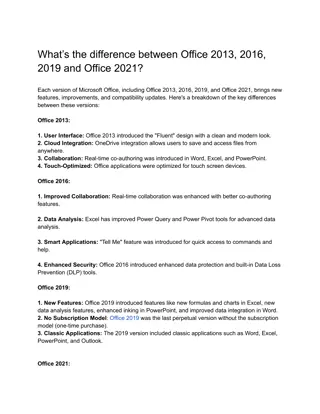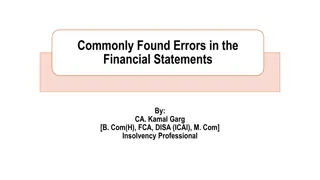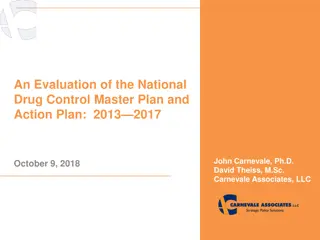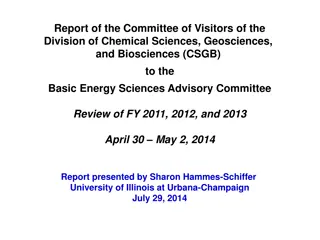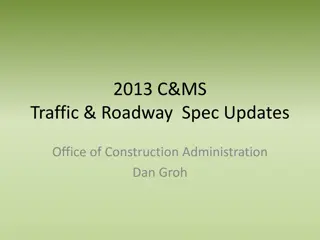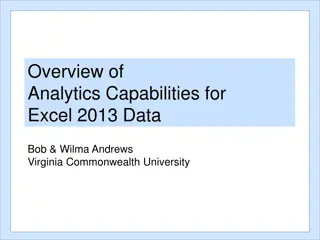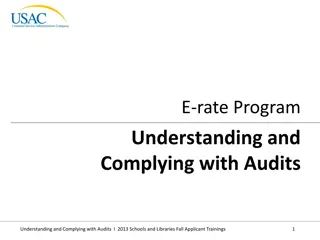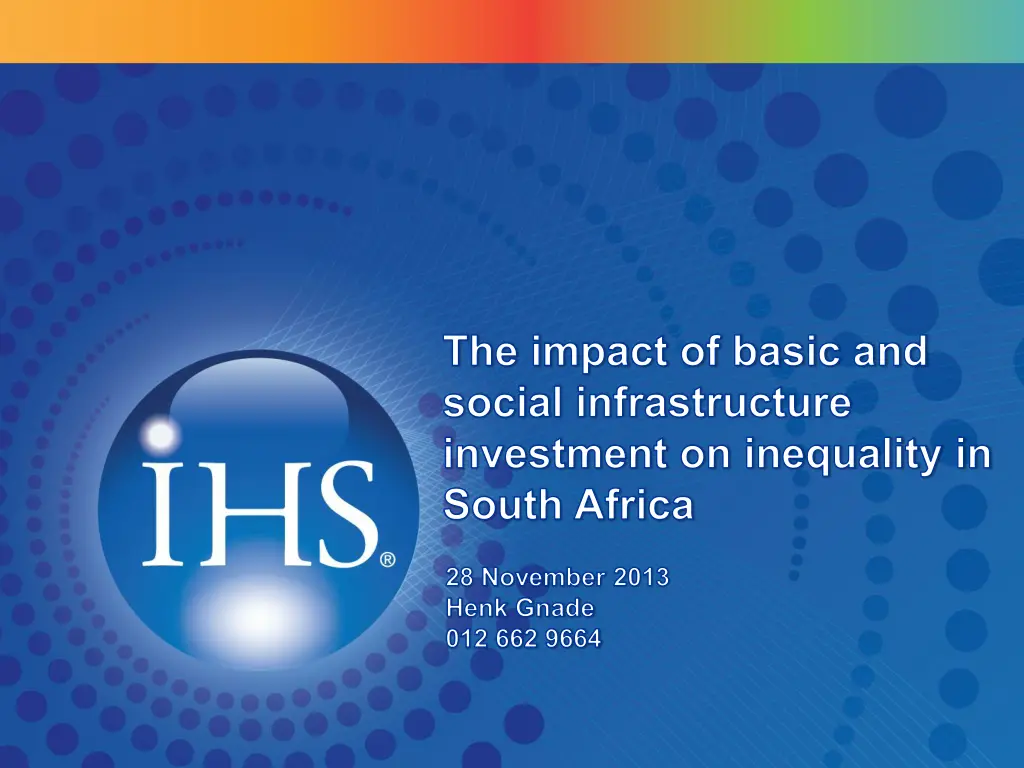
Impact of Basic and Social Infrastructure Investment on Inequality in South Africa
Explore the impact of infrastructure investments on inequality in South Africa since 1994, examining programs like RDP, GEAR, and ASGISA. The National Development Plan (NDP) of 2012 aimed to address challenges such as poor education outcomes, high disease burden, and divided communities. Research emphasizes the link between infrastructure investment and reduction of poverty and inequality, highlighting the need for more focus on rural areas and municipalities.
Uploaded on | 1 Views
Download Presentation

Please find below an Image/Link to download the presentation.
The content on the website is provided AS IS for your information and personal use only. It may not be sold, licensed, or shared on other websites without obtaining consent from the author. If you encounter any issues during the download, it is possible that the publisher has removed the file from their server.
You are allowed to download the files provided on this website for personal or commercial use, subject to the condition that they are used lawfully. All files are the property of their respective owners.
The content on the website is provided AS IS for your information and personal use only. It may not be sold, licensed, or shared on other websites without obtaining consent from the author.
E N D
Presentation Transcript
The impact of basic and social infrastructure investment on inequality in South Africa 28 November 2013 Henk Gnade 012 662 9664
BACKGROUND: Numerous aimed to improve quality of life and promote economic and social transformation have been launched since 1994, major programs include: Reconstruction and Development Programme (RDP) - 1994 Growth Employment and Redistribution (GEAR) - 1996 Accelerated and Shared Growth Initiative of South Africa (ASGISA) 2006 New Growth Path (NGP) - 2010 Achieving mixed levels of success with high levels of poverty and inequality still persisting National Planning Commission (NPC) was the tasked to determine a vision of what South Africa should look like in 2030 and how it could be achieved. A growth diagnostic was released (2011) and identified 9 challenges In to alleviating poverty and reducing inequality: Poor education outcomes High disease burden health system cannot meet demand and sustain quality Divided community Uneven public service performance (often of poor quality) Divided spatial patterns hampering inclusive development Low employment levels Corruption Resource-intensive economy unsustainable Infrastructure poorly located, inadequate and crumbling infrastructure The diagnostic overview indicated that the challenges regarding poverty and inequality are more severe in rural areas and municipalities. The National Development Plan (NDP) - 2012
SIGNIFICANCE OF RESEARCH: The impact of selected infrastructure services on growth and development has been well researched internationally: It shows a strong relationship between investment in infrastructure and growth (causality concerns) The exact impact on poverty and inequality remains elusive consensus is that, under the right conditions, investment in basic infrastructure does contribute to reducing inequality and poverty (Calder n & Serv n 2008:1) The effects of infrastructure Investment in rural and urban municipalities are largely understudied Unavailability of comparative data (Bogetic & Fedderke, 2005:12; Svendson, 2009:25). Information on the effect of infrastructure reforms on poor citizens, who typically live in rural areas, is limited as a result of the lack of consistent data (Jerome & Ariyo (2004:39) Some notable data restrictions or omissions include: Identification, measurement and heterogeneity Empirical analysis on the impact of infrastructure on rural and urban areas respectively Empirical analysis on the collective impact of infrastructure investment (the impact on rural and urban areas being absent) (Calder n & Serv n, 2008:7) The respective impact on urban and rural infrastructure investment could assist policy makers and planners to: Prioritise basic and social infrastructure delivery (most deprived, greatest number of people reached etc.) Optimize social returns of basic infrastructure investment given limited resources and funds
Caldern & Servn (2004:26) suggest that infrastructure investment should be the poverty and inequality reduction policy. Lopez (2003:13) argue that public infrastructure investment would yield an increase in economic growth in addition to reducing poverty. Both Lopez (2004:17) and Calder n & Serv n (2004:26) indicate that infrastructure investment would benefit the poor more than proportionally.
CONCEPTUAL FRAMEWORK: Note: The conceptual framework indicated the number of connections and linkages that will be discussed in the literature review. The fact that certain connections are omitted or not discussed does suggest that they do not exist.
LITERATURE REVIEW: INDICATOR BINF Elasticity GDPPC HHDINC HDI PERPOV PERLIT Aschauer 1989 (0.24) Snieska & Simkunaite, 2009 Fedderke, Perkins & Luiz 2006 (0.15 0.39) Rodrigues 2006 (0.08 0.14) Brice o-Garmendia & Foster 2009 (0.14 1.12) 0.14 1.12 - - -0.17 - 0.20* -0.53 1.22* -1.3 -3.9 -1.37 0.09 0.25 - 0.5 GDPPC I M P A C T Komives et al. 2001 Estache et al. 2002 Fr hling 2010 Brenneman & Kerf 2002 Brice o- Garmendia et al. 2004 0.5-0.6 - - 0.5 HHDINC Brenneman & Kerf 2002 Calderon & Serven 2004 Kusharjanto & Kim 2011 Viscussi & Aldy 2003 Ravallion 2010 HDI Calder n & Serv n 2008 Bogetic & Fedderke, 2005 De la Fuente & Estache 2004 Jalilian & Weiss 2004 (0.35 0.52) Ram 2006 Bhorat & v/d Westhuizen 2005 Lopez 2003 Miranti, et al 2013 Estache 2002 Sanchez & Sbrana 2009 Seethepalli et al. 2008 Radhakrishna & Panda 2006 0.14 & 0.16% point decr in pov in urban & rural areas PERPOV Calderon & Serven 2004 Leipziger et al. 2003 Bond 1998 Sadequl 2013 Sanchez & Sbrana 2009 Coulombe, Tremblay, & Marchand 2004 Estache et al 2002 Alesina & Perotti 1995 Brenneman & Kerf 2002 Estache et al., 2002 Hoogeveen & zler 2009 Seethepalli et al. 2008 PERLIT
METHODOLOGY: The basic infrastructure stock index, was calculated using the Principal Components Analysis (PCA) method (Theil, 1971). The estimated basic infrastructure index, at the first principal component, was calculated as follows: The constructed synthetic basic infrastructure index are used along with an urban-rural intercept and slope dummy using Least Square Dummy Variable (LSDV) regression in order to account for heterogeneity in the data. Using restricted and unrestricted regression techniques will determine whether the relationship between basic infrastructure and the growth and development indicators are statistically different in rural and urban municipalities. The general model are specified as:
RESULTS: VARIABLE LGDPPC C 9.608 BINF 0.361 62.791* (0.000) 0.211 52.018* (0.000) -0.129 -56.727* (0.000) 0.091 86.773* (0.000) 0.099 72.902* (0.000) RUDUM 0.387 13.761* (0.000) 0.105 5.268* (0.000) -0.118 -10.590* (0.000) 0.092 23.013* (0.000) 0.173 33.321* (0.000) BINFRU -0.035 -1.707* (0.088) 0.078 5.431* (0.000) -0.075 -9.278* (0.000) R2 Adj 0.600 F-Stat 1989.512 (0.000) 1413.521 10.894 0.516 LHHDINC (0.000) 2024.953 -0.690 0.604 LPERPOV (0.000) 5353.749 -0.702 0.729 LHDI (0.000) 4595.549 -0.603 0.698 LPERLIT (0.000) * T-Statistic ** R-Square (..) Probability
RESULTS: Basic Infrastructure Area Result: Elasticity Variable: Urban 0.326 ?????? = 9.995 + 0.326 ???????? LGDPPC Rural 0.361 ?????? = 10.062 + 0.361 ???????? Urban 0.289 ?????? = 10.998 + 0.289 ???????? LHHDINC Rural 0.211 ?????? = 10.894 + 0.211 ???????? Urban - 0.247 ??????? = 0.765 0.247 ???????? LPERPOV Rural - 0.129 ??????? = 0.690 0.129 ???????? Urban 0.091 ???? = 0.061 + 0.091 ???????? LDHDI Rural 0.091 ???? = 0.702 + 0.091 ???????? Urban 0.099 ??????? = 0.429 + 0.099 ???????? LPERLIT Rural 0.099 ??????? = 0.603 + 0.099 ????????
PRELIMINARY RESULTS: Social Infrastructure Variable: Area Urban Result: Elasticity 0.406 ?????? = 10.106 + 0.406 ???????? LGDPPC Rural 0.424 ?????? = 9.613 + 0.424 ???????? Urban 0.295 ?????? = 10.989 + 0.295 ???????? LHHDINC Rural 0.324 ?????? = 10.811 + 0.324 ???????? Urban - 0.150 ??????? = 0.979 0.150 ???????? LPERPOV Rural - 0.178 ??????? = 0.699 0.178 ???????? Urban 0.076 ???? = 0.587 + 0.076 ???????? LDHDI Rural 0.120 ???? = 0.697 + 0.120 ???????? Urban 0.073 ??????? = 0.395 + 0.073 ???????? LPERLIT Rural 0.127 ??????? = 0.599 + 0.127 ????????
CONCLUSION: The empirical results support the broad view that basic infrastructure investment would have a positive influence on growth, poverty and inequality Anecdotal indications in the reviewed literature suggested that the impact on growth, poverty and inequality be greater in rural as opposed to urban municipalities. The results are however mixed: Basic Infrastructure has a greater impact on GDP per capita in rural municipalities Increased basic infrastructure has a greater impact on urban poverty rates and disposable income Basic Infrastructure increases would have a similar impact in both urban and rural HDI and literacy rates While the initial results are somewhat ambiguous, they do make a number of important points: Basic infrastructure impact urban and rural municipalities differently on a number of factors Even when impacts are similar, urban municipalities are more deprived and in greater need of basic infrastructure services Limited funds and resources may necessitate prioritising between investing for the benefit of the most deprived citizens or reaching the largest number of beneficiaries
DATA: Variable: Description: Sources: HH Number of households Census, 1991, 1996, 2001, & 2011, CS 2007, STATSSA Tourism & Migration (various), UNHCR 2000. ASSA2000, 2001 & 2002. WATER Households with piped water at or above RDP-level Water Services National Information System - (WS NIS), STATSSA: The real estate and business services industry, Non-Financial Census of Municipalities, Census, 1991, 1996, 2001 & 2011, CS 2007. ELEC Households with electricity connections DPME, Annual Report (Various), Eskom Annual Report (Various), NERSA, Electricity Supply Statistics, STATSSA: The real estate and business services industry, STATSSA: Non-Financial Census of Municipalities, OHS ,1995 1999, GHS, 2008 to current, Census, 1991, 1996, 2001 & 2011, CS 2007. SAN Number of households with hygienic toilets STATSSA: The real estate and business services industry, Water Services National Information System - (WS NIS), Census, 1991, 1996, 2001 & 2011, CS 2007. GDPPC Gross Domestic Product per capita (GDPPC) is equal to the GDP of a region divided by the population of that region ABSA, CNCI, MIBU, DME, STATSSA, NAAMSA, National Accounts, SAPIA ,SEIFSA etc. HHDINC Household disposable income the total income of the household after taxes constant prices IES, 1995, 2000, 2005/6. LFS, 2000 to current, OHS ,1995 1999, QLFS, 2008 to current, GHS, 2008 to current, BMR Report no. 299. SARB: National Accounts, & Final consumption expenditure by households, 1996 to current., STATSSA report-04-03-02: Final social accounting matrix. Census, 1991, 1996, 2001 & 2011, CS 2007. HDI Human Development Index SALDRU, 1994, BMR Various, Census, 1991, 1996, 2001 & 2011, CS 2007
DATA: Variable: Description: Sources: PERPOV Minimum monthly income needed to sustain a household and varies according to the size of that HH Minimum Living Levels from BMR (Various), Census, 1991, 1996, 2001 & 2011, CS 2007. PERLIT Population aged 20+ who have completed grade 7 Census, 1991, 1996, 2001 & 2011, CS 2007. Urban municipalities A Metropolitan municipalities, large urban complexes with populations over 1 million people B1 with large budgets and containing secondary cities; B2 Local municipalities with a large town as a core COGTA 2009 Rural municipalities B3 Local municipalities with small towns, with relatively small populations and a significant proportion of urban population but with no large town as a core; and B4 Local municipalities which are mainly rural with communal tenure and with, at most, one or two small towns in their area COGTA 2009
RESULTS: Social Infrastructure VARIABLE LGDPPC C 9.613 SINF 0.424 46.634* (0.000) 0.324 68.381* (0.000) 0.120 73.937* (0.000) -0.178 -55.106* (0.000) 0.127 57.674* (0.000) RUDUM 0.493 18.245* (0.000) 0.087 6.243* (0.000) 0.110 22.892* (0.000) -0.180 -18.890* (0.000) 0.204 31.581* (0.000) SINFRU -0.0182 -9.736* (0.088) -0.029 -2.982* (0.003) -0.044 -13.258* (0.000) 0.028 4.189 (000) -0.054 -12.046 (000) R2 Adj 0.483 F-Stat 1241.814 (0.000) 2450.014 10.811 0.649 LHHDINC (0.000) -0.697 0.692 2987..994 LHDI (0.000) 1994.743 -0.699 0.594 LPERPOV (0.000) -0.599 0.633 2288..308 LPERLIT (0.000)

